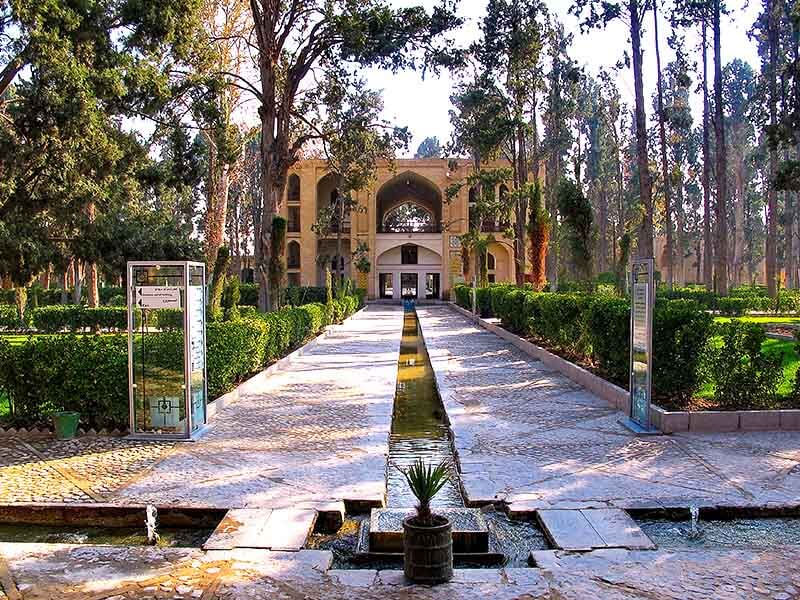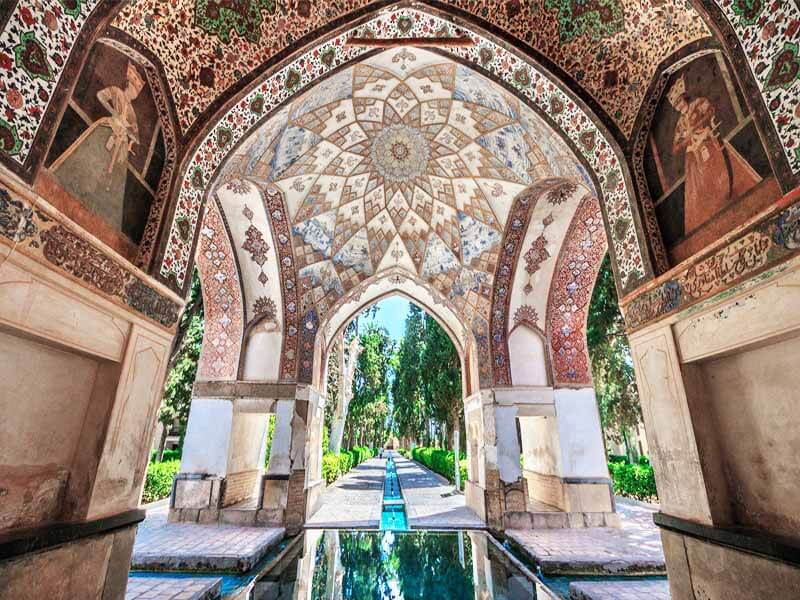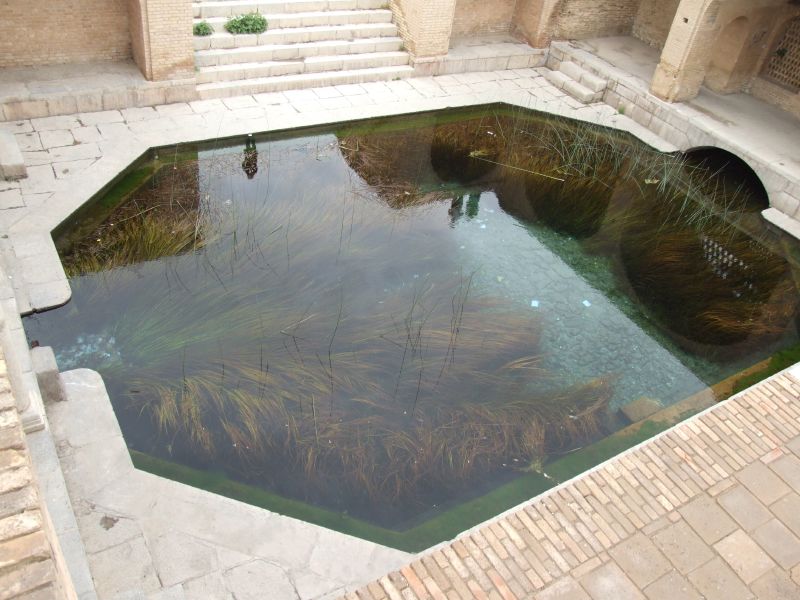
The old garden of Kashan was laid out slightly to the north of the original Fin Garden that could have been in contact with the Sialk civilization, tracing its history at least to the 5th millennium B.C. The Fin Garden of today, is believed to have been created in the 16th century during the early days of the Safavid Dynasty.
The current design goes back to the reign of Shah Abbas I, the 5th Safavid Shah of Iran. After the Safavid period, the Fin Garden continued to be constructed. At the start of the 18th century, during the reign of the second Qajar king, major restoration took place which lead to the expansion of the garden.
The garden was neglected and damaged several times until, in 1935, it was listed as a national property of Iran. After major renovations on this garden, in 2012, the garden was declared as one of the Persian Gardens on UNESCO World heritage list.

What is the design of the Persian Garden?
Before we get to the description of the Fin Garden, let’s get to know more about Persian Gardens. The Persian garden has some common features dating back to the start of the Achaemenid Empire in 6th century B.C. The most important factor shared in all Persian Gardens was the “Chahar Bagh” (meaning four gardens).
The layout of a Persian Garden was in a form of a rectangle or square, which was always divided into four parts by waterways. The water in the channels connected to an outside source, usually coming from a spring, or Qanat. Using fountains in the middle of the garden, the water was equally spread around into the channels.
Persian gardens symbolize the four Zoroastrian elements: sky, earth, water, and plant. During the Islamic period in Iran, the Persian gardens represented the Garden of Eden, or the four gardens of Paradise, which is mentioned in the Quran.
Although all Persian Gardens have the same layout, because of the different climates across Iran, some designs have been changed to adapt to the condition.
The Finn Garden is surrounded by high mud walls with circular watch towers that protect this oasis from the sandy dry lands of the outside. The beauty comes from a contrast between the lush green luxury within the garden, and the arid lands of the outside. Other plants in the Fin Garden include fruit trees such as apple and cherry trees, as well as flowers, including jasmine, tulips, lilies, and violets. The fragrant aroma from the blossom of the orange trees in spring is a fine example of this contrast.
The main source of water comes from a spring that had a pavilion built around it by the order of ‘Suleiman’, the 8th Safavid king. Today, the spring has been renamed as “The Suleimanieh Spring”. However, the spring’s source is still unknown today. Its water maintains a constant temperature throughout the year, and its flow is unchangeable. There is a high level of mercury in the water of the Suleimanieh spring; therefore, it is not recommended for drinking, but bathing in it is believed to have a healing effect.

The number of structures inside the Fin Garden have changed throughout its long history. The architecture used in this garden is a combination of Safavid, Zandiyeh and The Qajar Dynasties. The different structures inside the Fin Garden include: Hoz-e Joosh, Twelve Fountain Pool, Safavid Pavilion, The king’s room, The Teahouse, Khalvat-e Karim Khani and The Bath Houses
In Kashan’s Fin Garden there is a small pool astounding in design. This attractive pool with its floor covering is very similar to a rug design. The tiles of this pool had golden covers. However, it was stolen at the beginning of Reza Shahs reign in 1926.
The pond has 160 holes. The water is pumped into the pool from 80 holes, and the water is sucked from the remaining 80 holes. This mechanism helps prevent the overflow by equaling the inlet and outlet of water in these holes. This system is used for pumping the water out of the fountains of “12 fountain pool” explained below.
This pool was built during the reign of Mohammad Shah Qajar, at the same time of the boiling pool and the royal residence. Today, it is known as the Twelve Fountains pool and it is a true masterpiece. Inside the pool, there are fountains that work without using any external force. Water is pumped out of the fountains only by using the vertical flow of water. That’s why it is one of the architectural treasures of the Persian garden.
This two-story monument was built in 1016, by the order of Shah Abbas and by the efforts of the governor of Kashan. It was built in front of the entrance gate in the center of the garden. The monument had four floors in the past. But the earthquake that took place 40 years after its construction, seriously damaged it and only two floors were built during its reconstruction. Today, only a strip of the ceilings border that was painted in the Safavid period still remains.
The king’s room was a room for royal residence which was built in 1839 by the order of Mohammad Shah of the Qajar dynasty. Around this building, there are rooms for the servants of the king. Due to the respect that the servants had for the king, they always used the side doors and never entered the room using the main one. Moreover, the ceremonies of that time were performed in front of the building next to the pond.
Right next to the Qajar pavilion, there is a building called the “Teahouse”, which used to be called “The Women’s Spring”. In this section of the Fin Garden, all the incoming spring water is divided. One third of the water from the spring flows in this section and the rest gets divided into 3 channels which continues its path through the garden.
In this part of the Fin Garden, there is a private court named Khalvat-e Karim Khani, which was built by the order of Karim Khan Zand. Its construction dates back to 1762 and consists of a small courtyard and five simple rooms. Some authorities claim that the new building was constructed outside the garden walls because Karim Khan did not consider himself a king.
Another well-known structure in the Fin Garden is the two bathhouses. A large one, which was built during the Qajar period, and a small one that dates to the Safavid period.
The fame of the Fin Garden in Iran comes from the murder of Amir Kabir that took place in the small bathhouse in 1852. Amir Kabir served as the prime minister of Nasar al-din Shah, a ruler of the Qajar Dynasty from 1848 to 1851. He had attempted to implement a rational program for the modernization for Iran. Unfortunately, he was murdered in 1852.
